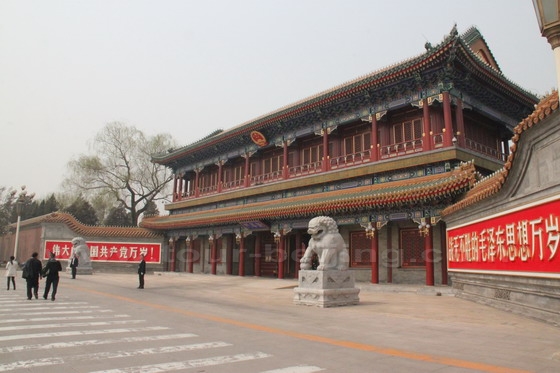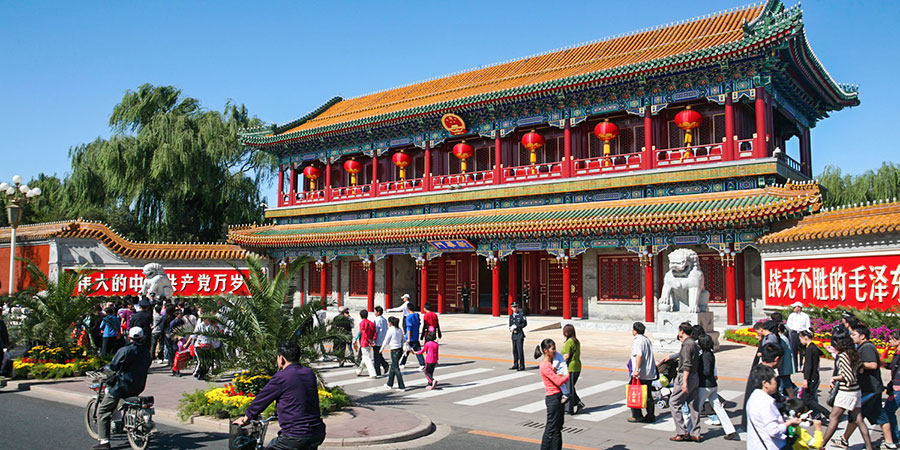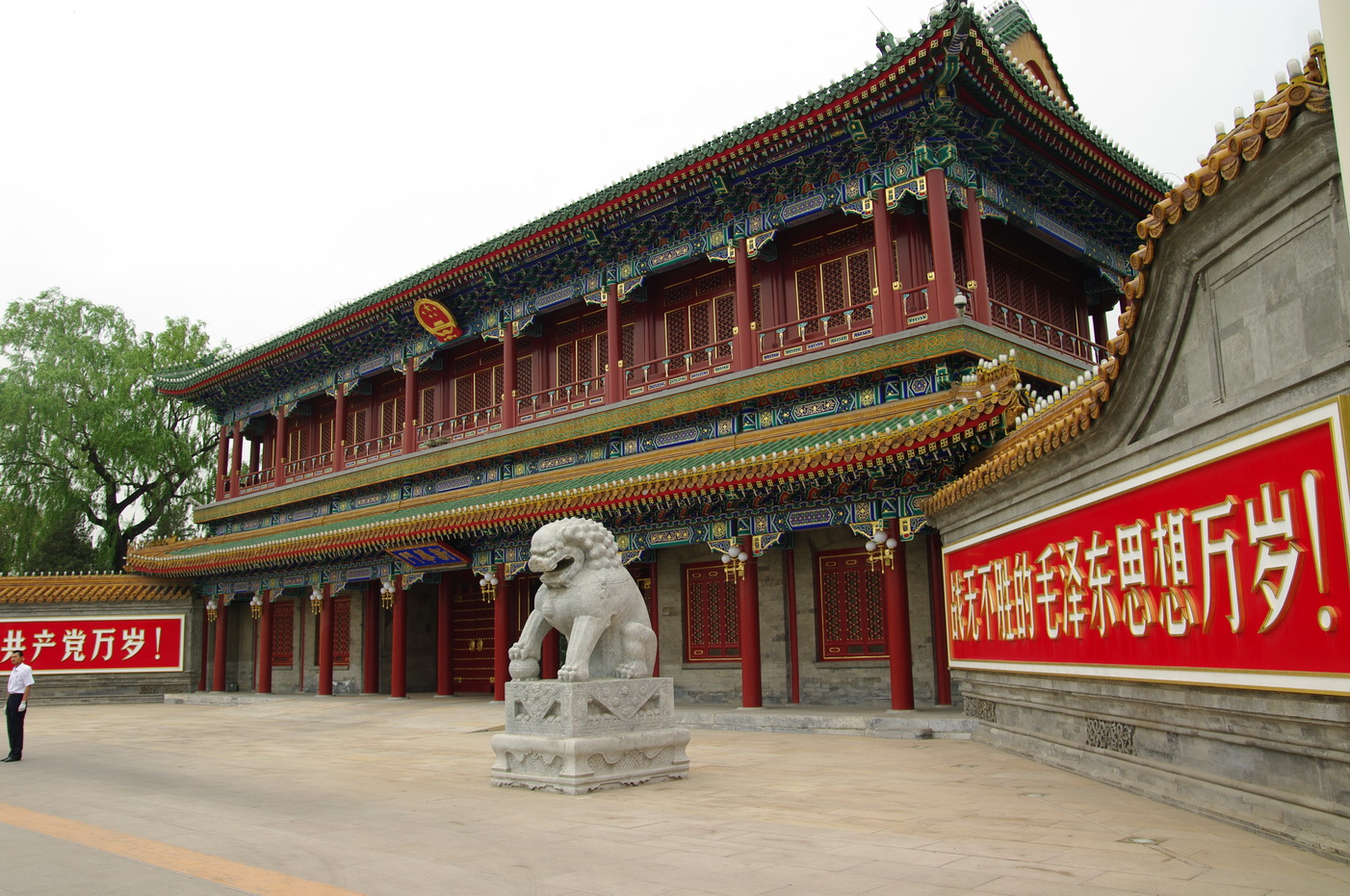Zhongnanhai
Zhongnanhai (Chinese中南海, Pinyin Zhōngnánhǎi ) is a clustered around two lakes park and building complex in Beijing, which serves as the headquarters of the Communist Party of China as well as the Government of the People's Republic of China.
Location and facilities
The sides of the heavily guarded walls and gates surrounded area is located west of the Imperial Palace. It extends around the two eponymous lakes, Nanhai ( " southern sea" ) and Zhonghai ( " Middle Lake "). The northerly Beihai, however, is outside of the area and open to the public as a recreational park.
The main entrance to Zhongnanhai is located in the south of extending West Chang'an Avenue. The Xinhuamen, the "Gate of New China ", is framed by the slogans "Long live the Communist Party " and " Long live the invincible Mao Zedong Thought ". The located behind the goal traditional spirit wall adorns the motto " The people are! " In the original manuscript of Mao Zedong.
There are numerous buildings on the banks of the lakes. Many of them date from the different dynasties of the Empire. Modern buildings have been added, especially from the Communists, such as the seat of the CPC Central Committee or the State Council.
Since Zhongnanhai is back seat of government, it is for the public as inaccessible as it was the Forbidden City during the Qing dynasty. After the Cultural Revolution was allowed from 1977 to 1985, to a limited extent visitors to the site, where tickets could be purchased only on good relations with the authorities but. During the intensification of the internal political situation in the late 1980s, which was to culminate in the Tiananmen Square Massacre, Zhongnanhai was fully closed again.
History
During the Jin Dynasty was located on the grounds of Taiye lake ( " Lake of the large water "), which corresponded approximately to the present-day examples and Zhonghai. The Daning Gong rose (the " Palace of Great Peace " ) on its banks. In the Yuan Dynasty, the lake was built in the imperial city, greatly expanded and built with a little palace architecture.
After transfer of the capital from Nanjing to Beijing in the Ming Dynasty was erected the new Imperial Palace just south of where the Yuan period. Accordingly, the Taiye area was expanded to the south and created today's Nanhai Lake. The case excavated earth was poured north of the Imperial Palace to Jingshan, the "Coal Hill " on. The three lakes are all connected by bridge spanned channels and onward formed the Imperial Park.
In the Qing Dynasty, the government allowed the imperial park a little smaller. Several emperors built along the lake several buildings and pavilions and used the area as a summer residence. The Empress Dowager Cixi was directed even permanently there and looked for the actual imperial palace only on ceremonial occasions.
During the Boxer Rebellion in 1900 occupied the Russian army Zhongnanhai and plundered the building. Later the site was the leader of the eight-nation alliance as headquarters. After the coronation Puyis his father lived there temporarily as regent.
After the fall of the dynasty in 1911 struck Yuan Shikai, president of the Beiyang Government, in Zhongnanhai his headquarters; it served as a substitute for actually favored, as a residence Puyis but still inaccessible Imperial Palace. Under the Nanjing regime 1928-1945 was Zhongnanhai to the public as a park. Only the Government of the People's Republic claimed the representative terrain again for political purposes. Many important politicians had their private residence in Zhongnanhai.
Political significance
In Zhongnanhai is the heart of the People's Republic of China, so it is one of the largest centers of political power on earth. In some cases, the term, similar to the Moscow Kremlin and the White House, used as a synonym for the Chinese government, party, or state power.
Accordingly, the area has frequently been the scene of demonstrations and protest rallies. On 18 April 1989 about organized democratically chosen students in front of the Zhongnanhai a sit-in and signs with slogans such as "Down with the dictatorship " and showed "Long Live Democracy". On 20 April, the police broke up the meeting on violence.
On 19 April 1999 demonstrated the Falun Gong movement in front of the premises. This sit-down strike provoked the fear of the government before a new Tiananmen incident and then led to massive persecution of the practitioners.
Monument
Zhongnanhai is since 2006 on the list of monuments of the People's Republic of China ( 6-302 ).










